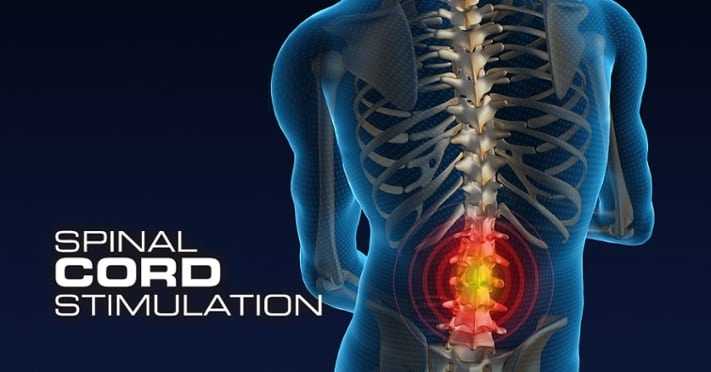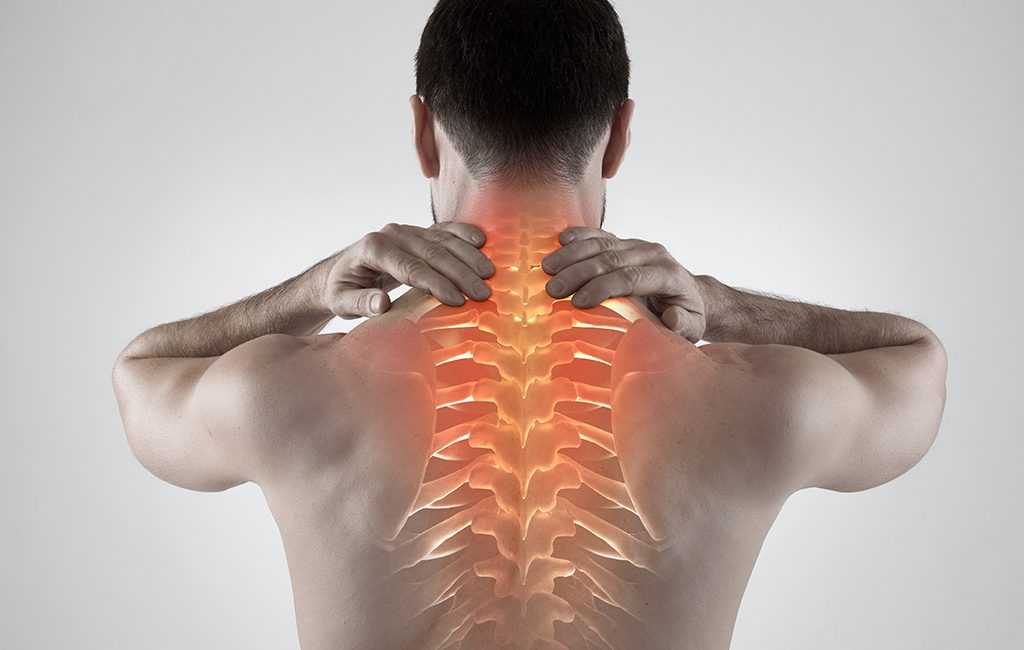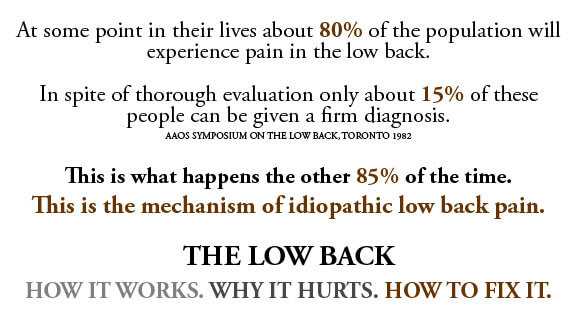Frequently asked questions about Spinal Cord Stimulation

What is spinal cord stimulation (SCS)?
Spinal cord stimulation is a safe and effective therapy for certain types of unresolved neuropathic pain. Spinal cord stimulation uses low-level electrical impulses to stimulate targeted nerves along the spine. The stimulation interferes with the transmission of pain signals to the brain and, when successful, replaces painful sensations with a more pleasing sensation called paresthesia.
What does spinal cord stimulation therapy involve?
Spinal cord stimulation requires a minor surgical procedure to implant a small electronic device under the skin and to place electrodes in the space above the spinal cord (called the epidural space).
Is spinal cord stimulation safe?
As with any surgical procedure or pain therapy, side effects can occur. Although the risk of complications is low, you should discuss all risk factors and concerns with your physician. Spinal cord stimulation systems have been used successfully in thousands of people over the last two decades. Spinal cord stimulation treatment is also completely reversible, meaning that you can have the system removed or turned off permanently at any time.
What does spinal cord stimulation feel like?
The sensation is different for everyone. Some people describe SCS as a pleasant tingling. Ideally, the stimulation should be located in areas where you usually feel pain, and the sensation should be pleasant.
FAQs About Spinal Cord Stimulation Implant Surgery
Does spinal cord stimulation (SCS) require major surgery?
Not necessarily, but most often the procedure requires the sterile conditions of an operating room to implant the internal components of the spinal cord stimulation system. The surgery may be performed at the hospital on an outpatient basis or at a day surgery center.
How many surgeries are required?
Implantation is usually done in two steps: a trial implantation and a permanent implantation. The trial lets you and your physician try out the system to see if it will give you enough pain relief. The trial also lets your physician see your power and programming needs so he or she can decide which type of permanent spinal cord stimulation system—IPG, rechargeable IPG, or RF—will give you the best pain relief. If spinal cord stimulation adequately controls your pain, you will return to the operating room to receive a permanent system. Although it is called permanent, spinal cord stimulation is a completely reversible therapy. If you want to stop treatment, you can simply turn off the device or have the implanted components removed.
Where is the lead implanted?
One or more leads are inserted in the epidural space above the spinal cord using a small needle or through an incision. The exact placement of the lead or leads depends upon your pain pattern.
Where is the IPG, rechargeable IPG, or RF device implanted?
It is usually implanted in the buttocks or abdominal region, but it can be placed in other comfortable areas. You and your physician will decide where to place the IPG, rechargeable IPG, or RF device.
Are there possible complications with the surgery?
As with any surgical procedure, there is a risk of infection and bleeding. There is also a possibility of injury to the spinal cord, lead failure, or lack of benefit from the therapy. Although the risk of these complications is low, you should discuss all risk factors and concerns with your physician.
Will I feel the IPG, rechargeable IPG, or RF device under my skin?
Once the surgical wound heals, most patients say that it is easy to forget that the device is there. You may experience some discomfort while the surgical incision heals. This is perfectly normal and signals that the healing process has begun.
How soon after surgery can I return to a more active lifestyle?
Your physician will help you to determine what activities are appropriate and when it is safe to increase your activity level. Most patients are encouraged to gradually resume light exercise, such as walking and gardening. This will help to build your strength and lift your spirits.
FAQs About Daily Living With Spinal Cord Stimulation
The following are frequently asked questions (FAQs) about daily living with a spinal cord stimulation(SCS) system.
Do I use the stimulator 24 hours a day?
You can use your spinal cord stimulation (SCS) system around the clock if necessary. Most patients get pain relief during the day and turn off the system before bedtime because there is often a carry-over effect of pain relief. Other patients use their systems while sleeping. You and your physician will determine the best schedule to control your pain. However, with an IPG, you may want to turn the system off at bedtime to conserve the battery.
Can I actually control the stimulation therapy?
Yes and no. It depends upon the type of spinal cord stimulation system you receive.
Therapy is controlled using the programmer (IPG or rechargeable IPG system) or transmitter (RF system). In all cases, the programmer/transmitterlets you turn the stimulator on and off, and it also lets you adjust the strength of the stimulation.
With lesser-featured systems you have to return to your physician to make virtually any other adjustments. With the more advanced and full-featured ANS systems, you are able to choose between multiple programs developed by your physician just for you and to fine tune programs (within safety limits prescribed by your physician). This capability is called PC-Stim®. Another feature of ANS systems, called MultiStim®, allows you to mix and match stimulation programs so you can achieve the best possible pain relief at any point throughout the day or during specific activities.
Can I shower or swim with the stimulator?
Yes. However, if you have an RF system, you’ll first have to remove the antenna and transmitter.
Is it safe to use household appliances or cellular equipment with my stimulator?
Yes. It is safe to use pagers, computers, and standard household appliances (including microwave ovens) with your system. The safety and effectiveness of use with cell phones has not been tested yet. Department store and airport security gates or theft detectors may cause an increase or decrease in stimulation while you pass through the device. This sensation is temporary and should not harm your system. However, as a precaution, you should turn off your system before passing through devices like these.
Can I drive with the stimulator on?
No. Spinal cord stimulation should not be used while operating a motor vehicle or other heavy equipment. If you are driving, you will need to turn the stimulator off. However, you can ride as a passenger with the stimulator on.
Will spinal cord stimulation allow me to return to work?
Your physician will help you make this decision. Some patients, depending upon their condition and occupation, are able to return to work while using spinal cord stimulation. However, returning to work should be a goal you and your physician set, not a requirement for successful therapy.
Can I travel with the stimulator?
Yes. Metal detectors and antitheft devices may detect your spinal cord stimulation system, but your patient identification card will help to clear you through these checkpoints. Thousands of people have implanted medical devices, such as pacemakers, so the security personnel will know what to do. When flying, it is important to follow the flight crew’s instructions and turn the stimulator off for takeoff and landing.






I love feeling my device vibrate! I feel it on my left side, all the way down. Problem is, my SI surgery left me unable to walk with my right leg, or do anything that involves my right hip, leg or lower back. We keep going over everything, to no avail. Can’t change the settings or areas on my remote. My friends can…